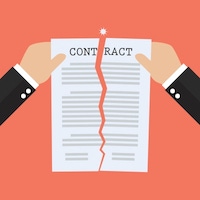States, counties and municipalities vie for manufacturing jobs, but companies don’t always keep their promises
Government officials woo companies with incentives and tax breaks with the understanding that they will create high-paying jobs. The problem is that corporations don’t always keep their end of the bargain.
December 12, 2016

A kerfuffle broke out when Carrier decided not to move all its manufacturing out of Indiana to Mexico, and President-elect Donald Trump took credit for saving 1,100 of those jobs, more or less. It was later clarified that some 800 jobs still will be heading to Mexico.
|
Image courtesy Sira Anamwong/free-digitalphotos.net. |
Back in February when Carrier first announced that it was moving and leaving 1,400 employees without jobs, Indiana had its knickers in a knot over the fact that Carrier had received tax incentives to put the Carrier plant in Indianapolis. A February 15 article by James Gherardi of Fox 59 news, noted that “millions of dollars were given to Carrier to keep the production plant in Indianapolis.” Understandably, the announcement about the move received a lot of backlash.
The city of Indianapolis had provided a six-year tax abatement to the company to encourage the building of the “multi-million dollar expansion in 2011” of the Carrier plant, “which got Carrier out of paying nearly $1 million in city property taxes,” said the Fox 59 report.
In 2013, the federal government offered Carrier $5.1 million in clean tax credits to ramp up production in Indianapolis, said Fox 59 news: “Since 2013, the Indiana Economic Development Corp. gave Carrier almost $200,000 in employee training grants.” Carrier responded at that time that it had “not received and will not claim the $5.1 million tax credit.”
That’s the way the game is played. States, counties and municipalities want these manufacturing jobs because they are good, skilled, high-paying jobs. They can afford to offer companies all sorts of incentives to locate or expand manufacturing plants in their area because they will get it back from the many employees who will buy goods and services and pay taxes. This has been going on for several decades, so that’s nothing new, even though there was some backlash about more incentives for Carrier to stay put.
When large manufacturing plants locate or expand facilities, they also bring with them indirect jobs, like moldmakers, plastics processors and so forth. That is how communities, cities and counties grow economically. Often these incentives involve promises of hundreds or even thousands of jobs for local residents. Community colleges often agree to implementing skills and training programs for the company to ensure an available supply of skilled workers.
Sometimes those promises of hundreds or thousands of jobs come to pass, but many times they don’t. According to a recent Associated Press (AP) report, electric car manufacturer Tesla Motor is on the hot seat in northern Nevada because it hasn’t hired as many workers for its manufacturing plant outside of Sparks, NV, as promised back in 2014. The state approved a $1.3 billion tax incentive to lure Tesla to Nevada on a projection of 1,700 jobs. So far Tesla has only hired 331 people.
However, the employment is not worrisome to Nevada, with a spokeswoman for the governor’s office telling the AP, “They’re hitting the thresholds as we’ve defined them and that’s what’s important.”
Steve Hill, the economic development chief for Nevada, signed the certificate on Dec. 5 that included tax credits totaling nearly $6 million earned during the April-June 2016 period, plus $2 million in credits earned during the previous quarter, according to the AP report. The certificate said the credits are to be applied toward gambling licensing fees, indicating they will be sold to a casino company.
"Tesla is required to declare how the tax credit will be used. In July, the company sold $20 million in tax credits to Las Vegas-based MGM Resorts International. To date, Tesla’s battery factory project has qualified for $3.4 million in credits,” said the report. “Legislation entitles Tesla to receive $195 million in transferrable tax credits that it can sell to other businesses as it meets specified performance levels.”
Tax credits are available in the amount of $12,500 for each qualified employee hired. At least 50% of employees must be Nevada residents, and the average minimum wage must meet $22 per hour, according to the AP report.
At the end of the day, the states, counties and municipalities can offer these tax incentives to attract manufacturing and other types of businesses, but it’s up to these companies to fulfill their promises with regard to the number of employees they expect to hire and the intentions of the company to remain in that community long-term. Don’t take the money then run for the border.
About the Author(s)
You May Also Like





